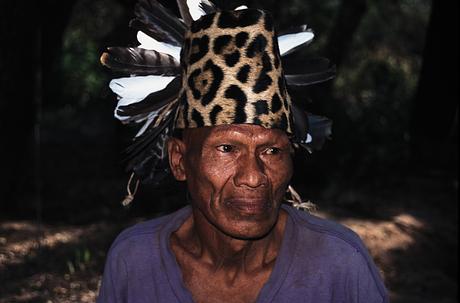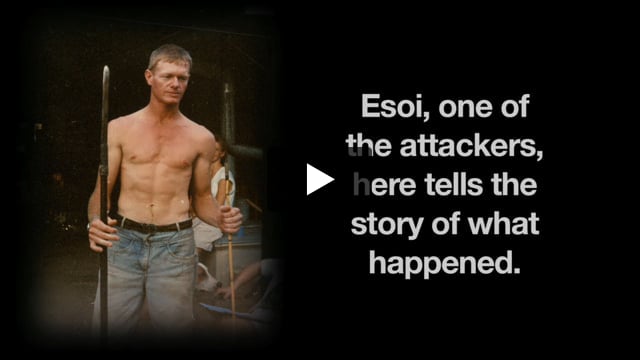Bulldozers enter heart of isolated Indians' land
September 30, 2003
This page was last updated in 2003 and may contain language which is now outdated.
Even though you don't know us, please continue helping us, because we need our traditional land.'
Erui Etacori
In recent weeks bulldozers have entered the heartland of uncontacted Indians in Paraguay. This illegal action threatens the survival of the last isolated Indians south of the Amazon basin.
The Indians, members of the Ayoreo-Totobiegosode tribe, will almost certainly already have fled their communal houses and gardens, and be living rough in the forest. Parojnai Picanerai, a Totobiegosode man who came out of the forest in 1998, told Survival of his memories of seeing bulldozers approaching: We thought the bulldozer could see us… We thought the bulldozer saw our gardens and came to eat our vegetables and fruits, and us as well.' Parojnai's wife Ibore added, We left all our things behind us and ran and ran.'
Since 1991 there have been at least eight known occasions when bulldozers working for the area's landowners have encountered the Totobiegosode. Most of these incidents caused the Indians to flee, abandoning their houses, crops and belongings. They are already, therefore, effectively being chased from one corner of the forest to another.
The Totobiegosode are nomadic hunter-gatherers who live in small, communal houses for several months at a time. Besides growing corn, squashes and beans, they also live off the rich wildlife of the Chaco, the scrub forest and grassland of western Paraguay. The Indians hunt wild pigs, anteaters, tortoises and armadillos, and gather the abundant wild honey.
Other Totobiegosode were brought out of the forest in the 1970s and 1980s in manhunts' organised with the help of the fundamentalist American missionary organisation the New Tribes Mission, which has a base in the region. These Indians are desperately worried for the fate of those still in the forest, who are their close relatives. With the help of a Paraguayan organisation, the Totobiegosode Support Group (GAT), in 1993 they submitted a land claim to 550,000 hectares of their land, the largest area of intact forest which remains and an integral part of Totobiegosode territory. All the land, and the rest of the Paraguayan Chaco, was sold to private landowners a century ago, and is now rapidly being opened up for logging and cattle ranching.
The whole area being claimed is protected by injunctions secured by the Indians' supporters, which stop the landowners from doing any work on the land or selling it, other than to the government. Despite the landowners' efforts to get them lifted, the injunctions remain in force.
After a decade of pressure the government has bought around a quarter of the land claimed from the landowners and handed it to the Totobiegosode, but one small area in the heart of the claim remains in private hands, belonging to the firm Carlos Casado. This firm sent in huge bulldozers at the end of September, in defiance of the injunctions, which have cleared wide tracks along the boundaries of their property. This seems to be in preparation for an attempt to sell the land, which would also be illegal.
Another land-owning company called Luna Park carried out similar work last year: its tracks now penetrate into the core of the Totobiegosode heartland. Reports received by Survival indicate that the firm had hired 300 men to start logging operations, but the hundreds of letters sent by Survival supporters galvanised the Attorney-General's office into halting the work. Similar action is essential now if the Totobiegosode's heartland is to be saved.




